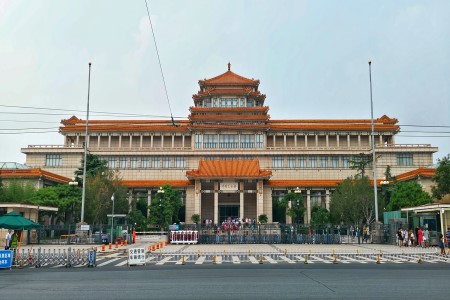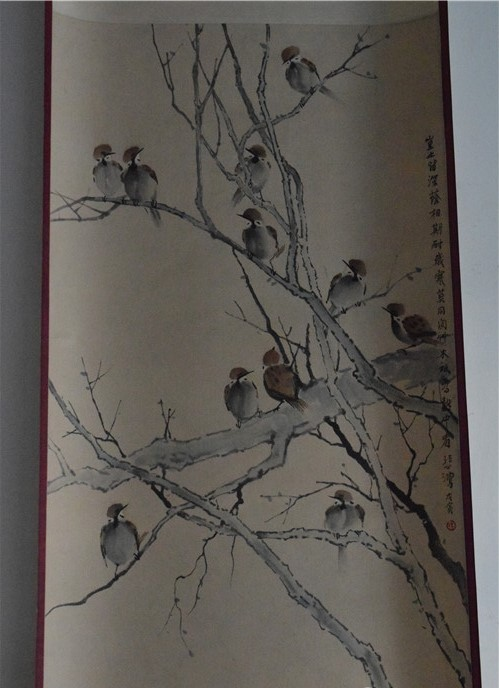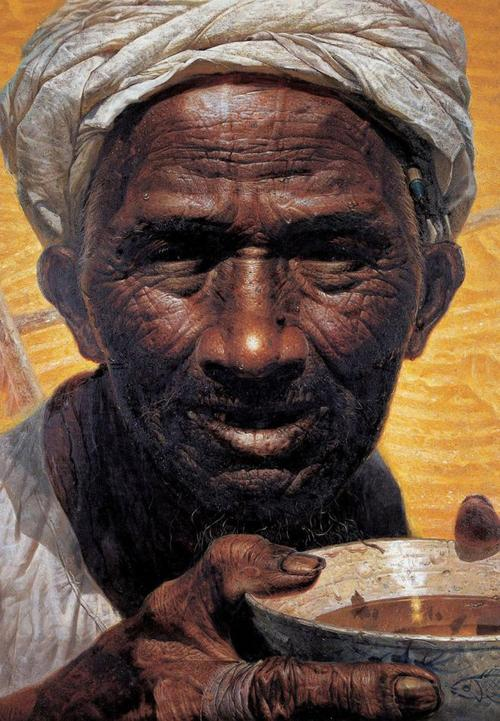Chinese Name: 中国美术馆 Pronunciation: Zhōngguó Měishùguǎn
Building Time: 1958
Building Area: 18,000 square meters
Recommended Visiting Time: 1-2 Hours
Address: No.1, Wusi Street, Dongcheng District, Beijing, China
Building Function: To collect and exhibit domestic and foreign artworks.
1. Admission stops at 16:00.
2. The museum is closed every Monday (except legal holidays).

In China, the National Art Museum of China (NAMOC) is the only national art museum of plastic arts.
The main building of the museum, roofed with yellow glazed tiles and surrounded by corridors and pavilions, follows the style of traditional Chinese architecture. The building covers an area of more than 18,000 square meters, including 21 exhibition halls in its six stories. And the exhibition halls cover an area of 6,660 square meters.
The sculpture park in the museum covers an area of about 3,000 square meters. The modern collection storeroom built in 1995 covers an area of about 4,100 square meters.
The museum, as the highest hall of fine arts in China and a public cultural service platform, integrates exhibition, collection, research, public education, international exchange, restoration of arts, and cultural and creative industries.
The museum collects over 110,000 pieces of various artworks. Most are representatives of excellent art masters in China from ancient times to today. Some foreign artistic works as well as a lot of Chinese folk artworks are also collected in the museum.
The representatives were created by many Chinese famous artists, such as Su Shi, Tang Yin, Xu Wei, Ren Bonian, Wu Changshuo, Huang Binhong, Qi Baishi, Xu Beihong, Lin Fengmian, Liu Haisu, Pan Tianshou,Li Keran, Jiang Zhaohe, Wu Zuoren, Dong Xiwen, Wu Guanzhong, and Zhu Dequn.

Visitors can also appreciate the works of many Chinese well-known calligraphers, such as Yu Youren, Gao Ershi, Sha Menghai, and Qi Gong and the representatives created by Chinese sculptors, who are Liu Kaiqu, Hua Tianyou, Wang Linyi, Zeng Zhushao, Xiao Chuanjiu, Zhang Chongren, Wang Zhaowen, Pan He, Liu Huanzhang, Wen Lou, and Zhu Ming. People will also have the opportunity to experience the works of famous international art masters such as Picasso, Salvador Dalí, Kaethe Kollwitz, and Ansel Adams.
To meet the demands of national cultural construction and development, the new museum of the National Art Museum of China, a national key project, is under construction next to “Bird’s Nest” in Beijing’s Olympic Park, with an area of 128,600 square meters.
The various important exhibitions since its establishment reflect the development of Chinese art and provide a key platform for artistic exchanges between China and the world. In recent years, the museum has offered new exhibitions themed “Carrying Forward the Chinese Spirit”, “Collection Revitalization”, “Academic Invitations”, “Donation and Collection”, “International Exchange”, and “Belt and Road”. These series exhibitions have had a wide and lasting social impact.
The National Art Museum shoulders the responsibility of upholding outstanding traditional culture, collecting fine arts, strengthening international and domestic exchanges, promoting contemporary artistic creation, and benefiting public cultural services.
In 1958, the construction of the National Art Museum of China started.
In 1963, the museum was officially opened to the public with its title board written by Chairman Mao Zedong.
In 1995, a modern collection storeroom of the National Art Museum of China was founded, with a covering area of 4,100 square meters.
On March 2, 2011, the National Art Museum of China was opened to the public free of charge.

Banana Trees and Sparrows, a Chinese painting with a size of 115 cm × 54.2 cm, was created by Xu Beihong (1895-1953) in 1942. Xu Beihong, a representative Chinese painter, art educator, and art activist, devoted his life to improving Chinese painting with the realistic feature of Western painting. He has made important contributions to the innovation of Chinese painting.
The painting is characterized by the painting skills of broad brush strokes applied to the banana trees, the beautiful appearance of the sparrows, and the watercolor skills applied to the grass. The whole work is fresh and full of vital force, illustrating his aspiration of combining the West and the Chinese painting skills.

Father, the oil painting work with a size of 215 cm × 150 cm, was created by a Chinese famous artist called Luo Zhongli in 1980. Now, the painting, the first prize winner at the 2nd China Youth Art Exhibition, is collected by the National Art Museum of China.
The man in the work is exactly the image of a typical farmer in the west of China. He has black and rough skin and dry lips, with only one tooth left, holding a broken bowl. The painting is so real and clear, strongly impacting the audience. Luo did not beautify the image of the farmer. Rather he applied realistic approaches, which were very advanced at that time.
The year 2018 marks the 110th anniversary of the birth of the famous painter Fan Changqian. The Chinese Singaporean artist was born in Guangdong Province in 1908. To honor his life and meet his last wish to bring his artworks back to China, his daughter Yao Wangnihui contacted the National Art Museum of China and showed her aspiration to donate her father’s artworks.

However, the donation was not going well because one of the paintings to be donated was missing. Yao Wangnihui was worried and said, “I have given my words to the museum so I cannot break it.”
After two weeks, Yao finally found out that the Trio of Plums, Orchid, and Rock, the missed painting had been collected by a collector in Singapore. At last, she took back this painting with the great expense of exchanging it with another painting by Fan Changqian and additional benefits.
Yao mentioned that she did not fall asleep for days when she was eager to find the painting. While she realized her father’s last will to donate the paintings to the National Art Museum of China eventually, she was almost in tears with excitement.
1. Ticket Issuing Time: 9:00-16:00
2. Visiting Time: 9:00-12:00 (maximum 1,100 visitors); 14:00-16:00 (maximum 700 visitors)
3. Please enter the museum through the south gate with valid ID cards or passports after security checks.
4. No smoking in the museum.
5. No drinking or eating in the exhibition halls.
6. Wheelchairs and strollers are available without charge at the reception desk in the main building of the museum.
7. Visitors can take photos in the venue unless there is a sign prohibiting photographing, but flash lamps and tripods are not allowed.
Take bus 111 and get off at the Art Museum Station.
Take bus 101, 109, 112, 128 or 58, and get off at the Art Museum East Station.
Take bus 104 or 108 and get off at the Art Museum North Station.
Take Metro Line 5 or 6, get off at Dongsi Station (Exit E), and walk 20 meters toward southwest, turn left into Lianfeng Hutong, walk 20 meters, turn right into side road of Dongsi Xidajie(West Dongsi St.), walk about 480 meters to the destination.
Take Metro Line 8 (north section), and get off at National Art Museum Station (Exit A)
Chinese: 请带我去中国美术馆。 English: Please take me to the National Art Museum of China.
Chinese: 请带我去中国美术馆的东门。English: Please take me to the East Gate of the National Art Museum of China.
Chinese: 请带我去中国美术馆的南门。 English: Please take me to the South Gate of the National Art Museum of China.
If you go to the National Art Museum of China from the center of Beijing (Grand Hyatt Beijing), it takes about 10 minutes (about 15 yuan).
If you go to the National Art Museum of China from Beijing Capital International Airport, it takes about 35 minutes (about 100 yuan).
If you go to the National Art Museum of China from Beijing Daxing International Airport, it takes about 75 minutes (about 185 yuan).
If you go to the National Art Museum of China from Beijing West Railway Station, it takes about 35 minutes (about 35 yuan).
